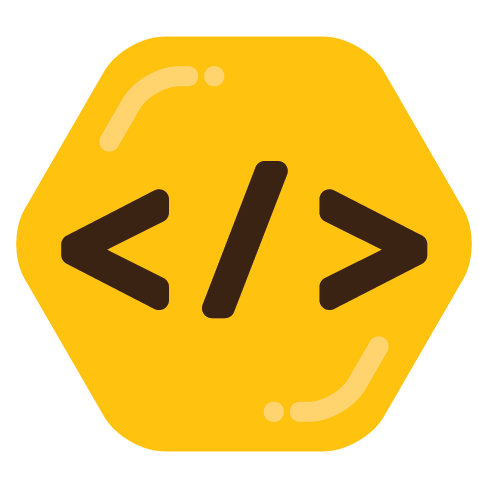

LEDs should last for tens of thousands of hours. There may have been a manufacturing defect in OP’s case.
Programmer in NYC


LEDs should last for tens of thousands of hours. There may have been a manufacturing defect in OP’s case.
If I’m doing more than one cracking two together is best. For the last one, countertop.
I get the flat, inside-the-sink idea. But I’d want to clean either way, and I clean the counters more often than I clean the sides of the sink.


Well you’re really feeding my Nix confirmation bias here. I used to use Ansible with my dot files to configure my personal computers to make it easy to get set up on a new machine or server shell account. But it wasn’t great because I would have to remember to update my Ansible config whenever I installed stuff with my OS package manager (and usually I did not remember). Then along came Nix and Home Manager which combined package management and configuration management in exactly the way I wanted. Now my config stays in sync because editing it is how I install stuff.
Nix with either Home Manager or NixOps checks all of the benefits you listed, except arguably using a “known” programming language. What are you waiting for?


AFAIK the best thing you can do to improve your coffee-freezing process is to prevent moisture from getting into the beans when you thaw. If you let it, moisture from the air will condense on the cold beans. So keep the beans in a closed, airtight container until they come to room temperature. (Airtight because water vapor is air.) So yeah, jars are good for this. Or sealed freezer bags should work too.


Well ok, they both use symlinks but in different ways. I think what I was trying to say is that in NixOS it’s symlinks all the way down.
IIUC on Fedora Atomic you have an ostree image, and some directories in the image are actually symlinks to the mutable filesystem on /var. Files that are not symlinks to /var (and that are not inside those symlinked directories), are hard links to files in the ostree object store. (Basically like checked-out files in a git repository?)
On NixOS this is what happens if examine what’s in my path:
$ which curl
/run/current-system/sw/bin/curl
$ ls -l /run | grep current-system
/run/current-system -> /nix/store/p92xzjwwykjj1ak0q6lcq7pr9psjzf6w-nixos-system-yu-23.11.20231231.32f6357
$ ls -l /run/current-system/sw/bin/curl
/run/current-system/sw/bin/curl -> /nix/store/r304lglsa9i2jy5hpbdz48z3j3x2n4a6-curl-8.4.0-bin/bin/curl
If I select a previous configuration when I boot I would get a different symlink target for /run/current-system. And what makes updates atomic is the last step is to switch the /run/current-system symlink which switches over all installed packages at once.
I can temporarily load up the version of curl from NixOS Unstable in a shell and see a different result,
$ nix shell nixpkgs-unstable#curl # this works because I added nixpkgs-unstable to my flake registry
$ which curl
/nix/store/0mjq6w6cx1k9907vxm0k5pk7pm1ifib3-curl-8.4.0-bin/bin/curl # note the hash is different
I could have a different version curl installed in my user profile than the one installed system-wide. In that case I’d see this:
$ which curl
/home/jesse/.nix-profile/bin/curl
$ ls -la /home/jesse | grep .nix-profile
.nix-profile -> /nix/var/nix/profiles/per-user/jesse/profile
$ ls -l /nix/var/nix/profiles/per-user/jesse
profile -> profile-133-link
profile-130-link -> /nix/store/ylysfs90018zc9k0p0dg7x6wvzqcq68j-user-environment
profile-131-link -> /nix/store/9hjiznbaii7a8aa36i8zah4c0xcd8w6d-user-environment
profile-132-link -> /nix/store/h4kkw1m5q6zdhr6mlwr26n638vdbbm2c-user-environment
profile-133-link -> /nix/store/jgxhrhqiagvhd6g42d17h4jhfpgxsk3n-user-environment
Basically symlinks upon symlinks everywhere you look. (And environment variables.)
So I guess at the end everything is symlinks on NixOS, and everything is hard links plus a set of mount paths on Fedora Atomic.
If you put an FHS on the actual system you wouldn’t be able to install multiple versions of the same package, updates wouldn’t be atomic - you wouldn’t get the big selling points of Nix.


When science kills the mystery, semantics keeps the debate alive!


To answer your other question, yes there are still single-cell organisms evolving into new species all the time, in the ocean and elsewhere. That includes new multi-cellular species evolving from single cells all the time. But it takes a long time to develop from cell, to clump of slime, to something with legs. So you might not notice the changes if you aren’t super patient.
Or were those separate questions? Are you asking if chickens descended from single-cell organisms? Yes they did. With a lot of steps in between.


“Atomic” is a catchy descriptor! Atomic distros for the Atomic Age! It could be an umbrella term since NixOS and Guix are atomic, but instead of images and partitions they use symlinks, and patch binaries to use full paths for libraries and programs that they reference. So there are image-based distros, and I guess expression-derived distros which are both atomic.
I haven’t tried image-based distros. This post fills in some gaps for me. Thanks for the write-up!
Although they’re not in the search, they are in the manual so you can find them searching that page. This one is listed as,
security.pam.services..fprintAuth
But it does take some inferences to find this, and to realize that you can put doas in place of ``
I did some digging around in the manual, and I tested this option which seems to work:
security.pam.services.doas.fprintAuth = true;
On my machine that adds this line to /etc/pam.d/doas:
auth sufficient /nix/store/fq4vbhdk8dqywxirg3wb99zidfss7sbi-fprintd-1.94.2/lib/security/pam_fprintd.so # fprintd (order 11400)
Edit: Note that the NixOS option puts in the full path to pam_fprintd.so. That’s necessary because NixOS doesn’t put so files in search paths.
Without doing more research I don’t know how to add arbitrary options to pam files in case you run into something that isn’t mapped to a NixOS option yet. The implementation for the pam options is here; there might be something in there that would work.


There is a bug report with some discussion here: https://github.com/ValveSoftware/steam-for-linux/issues/8076


Here is a source with lots of detail on how carbon emissions compare: https://www.theguardian.com/business/2023/dec/23/do-electric-cars-really-produce-fewer-carbon-emissions-than-petrol-or-diesel-vehicles
The tl;dr is that EVs have lower lifetime emissions. If the relevant grids use low-carbon sources then emissions are far lower. (But not as low as bicycles.)


I did not realize nano implemented syntax highlighting!


Wayland replaces the older X protocol. It doesn’t have to operate with older protocols. You might be thinking of XWayland which is a proxy that receives X API calls from apps written for X, and translates those to the Wayland API so that those apps can run under Wayland implementations. Window managers can optionally run XWayland, and many do. But as more apps are updated to work natively with Wayland, XWayland becomes less important, and might fade away someday.
PipeWire replaces PulseAudio (the most popular sound server before PipeWire). Systems running PipeWire often run pipewire-pulse which does basically the same thing that XWayland does - it translates from the PulseAudio API to the PipeWire API. It’s a technically optional, but realistically necessary compatibility layer that may become less relevant over time if apps tend to update to work with PipeWire natively.
So no, both Wayland and PipeWire are capable of operating independently of other protocols.
Oh this is just the thing for playing bard, and casting “vicious mockery” several times per combat
The justification for invading Iraq was a claim that they were developing nuclear weapons. It was well known at the time that the evidence was flimsy, and that even if true it was a flimsy excuse for an invasion. The main piece of evidence was an intercepted shipment of aluminum tubes that were soon shown to have nothing to do with a nuclear program. (See https://en.m.wikipedia.org/wiki/Iraqi_aluminum_tubes). That one is not a conspiracy theory.


Everything gets done so mind-bogglingly slowly! There’s always someone you have to talk, who has to talk to someone else. Bureaucratic processes often end up taking hours or days!! I knew to expect this - but experiencing it firsthand is a shock. How do people get anything done? They’ve computerized some things which helps. But every interface and every database schema has to be designed by a human which I’m told is expensive and takes even longer.


I like to use Obsidian for this kind of thing. It has tagging, and you can link notes and see the network of links in a visualizer. There’s also a “canvas” feature that lets you lay out notes spatially in whatever way makes sense to you. I assume there is a web clipping plugin which could make it easy to grab the comment content and link at the same time.
I think you can mount an ISO image under your running system and make changes. I found a couple of guides that might be helpful:
How to Mount an ISO File on Linux
Edit and repack .iso bootable image
I haven’t done this before, but I think you can
chrootinto the mount directory, and run package manager commands in the mounted image to install another package.Or I have an alternative suggestion that might or might not be easier. I’ve been hearing a lot about immutable/atomic distros, and people designing their own images. You could make your own ublue image, for example, with whatever you want on it.
A promising looking starting point is github:ublue-os/startingpoint. Ignore the “Installation” instructions, and follow the “ISO” instructions instead.
Or I saw recently an announcement of a new way to build atomic images that is supposed to be easier than ever, BlueBuild